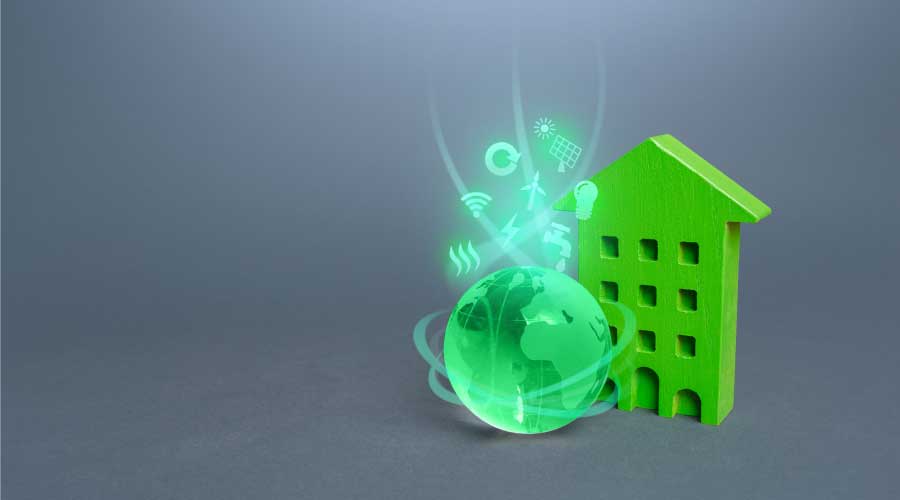How to Get Going on Energy Efficiency Programs
Facility managers interested in finding out more about energy-efficiency programs can start by contacting their utility. Larger customers should ask their electric utility account executives to guide them through the programs.
Smaller commercial customers who don't have a dedicated account manager can head to their utility's website to gather information, and then contact the utility to inquire about programs, says Gabler. Some utilities offer a business energy evaluation at no cost to the customer.
During the evaluation, an energy consultant will examine the equipment and processes in place at the company. Based on the results, the consultant will issue a range of recommendations. "The evaluation helps ensure that we fine-tune the recommendations and programs to the customer's needs," Haywood says. Other than being a customer of the company, no specific criteria are required to request an evaluation, he says.
In addition to identifying new investments, the evaluations often incorporate retrocommissioning, that is, checking whether the systems already in place within a facility are installed and operating properly, which also can reduce energy consumption substantially.
For instance, Com Ed, which provides service to customers across Northern Illinois, analyzed the HVAC, chilled water plant and air handling systems already in place within the Alexian Brothers Medical Center, a 387-bed acute care hospital in Elk Grove Village, Ill. Among the changes made, the hospital began scheduling equipment that didn't require continuous operation, such as the air systems, and adjusting its equipment control systems. These actions cut energy consumption 2.5 percent, for annual savings of more than $40,000.
Many utilities are moving to a "portfolio approach" to energy savings projects. They identify a range of projects that their customers can undertake over time, allowing them to develop a plan for most effectively spending the funds available. "Some are the low-hanging fruit with really fast payback; others offer deeper savings but require more investment," says Connor.
For example, along with replacing lights, which remains an important energy-saving option, NSTAR will work with facility managers to identify areas in which greater use can be made of daylight harvesting, which reduces the need for electric light in the first place.
NSTAR partnered with Massachusetts General Hospital to implement, among other measures, lighting and HVAC upgrades, and install new control systems. As a result of these changes, hospital executives signed a memorandum of understanding committing the organization to reduce energy use by 16 percent over three years. A multiyear plan was key, given that the hospital operates 24/7 and needs to undertake changes in stages, Connor says.
PG&E also takes a portfolio approach, or what the utility calls continuous energy improvement, says Southard Jones, manager, integrated demand-side management programs. The goal is to help the facility gain an overall payback on its investments of about two to three years, to enable the facilities team to continually seek ways to improve energy efficiency.
A Range of Incentives
Within most energy efficiency programs are several types of incentives. One is what's often referred to as a prescriptive formula, says Stephan Baab, manager of business programs with Com Ed. The Illinois utility pays a set amount for each high-efficiency lamp, motor or other piece of equipment that's installed. For instance, as of early February, Com Ed customers who removed a 2-foot T12 lamp and replaced it with a T8 system might have qualified for a $4 incentive.
Similarly, Florida Power & Light paid (as of early February) a $4.16 per ton incentive on water-cooled centrifugal chillers that met FP&L efficiency criteria. A hotel installed three 1,600 ton chillers and received an incentive payment of $19,968 toward their cost. "The actual incentives available to customers are always calculated and verified by our energy specialists performing the business energy evaluation during the early stages of the customer-decisionmaking process, using the approved FPL program standard," Haywood says.
In New York, ConEd worked with the Crowne Plaza Hotel to boost the energy efficiency of hotel's exterior sign. The sign's 3,300 40-watt incandescent lights were replaced with 3,300 8-watt compact fluorescent bulbs. Along with annual energy savings of about $130,000, the hotel received a one-time incentive of $13,200 or $4 per bulb.
For energy-efficiency projects that can't be neatly categorized, many utilities also offer customized programs, Baab says. Rather than pay a set amount per piece of equipment installed, they may offer some amount per unit of energy saved, such as 7 cents per kilowatt hour avoided. Custom programs often come into play with new construction, or when the technology being installed is new, and a prescriptive formula has not yet been developed. Some LED equipment falls into this category, although it's quickly becoming mainstream and moving into prescriptive programs, Baab adds.
ConEd also offers customized programs, Pospisil says. For example, it will work with the facility's design team to evaluate a proposed solution and calculate the estimated savings. The utility may then buy back the first year savings or pay some amount per kilowatt-hour saved. The goal is "to bring the payback to a level that's attractive to the building owner or operators," he says.
Some programs focus on specific uses of energy. In Florida, that's often — not surprisingly — air conditioning, says Haywood. FP&L's air conditioning program helps reduce both peak and overall demand. For instance, the utility offers incentives to reduce the initial investment in thermal energy storage systems. These systems can help balance energy demand between day and night time, which is critical in Florida, given how demand for air conditioning can skyrocket in mid-day. As of early February, FP&L was offering $464 to $580 per ton of cooling load removed between April and October, and during the hours of 12:00 P.M. to 9:00 P.M. on weekdays.
Customers benefit both from the rebate and from lower energy costs. The cost per kilowatt of energy can vary widely by time of day.
While most facility managers will be interested in qualifying for any incentives that will help offset the cost of energy-saving investments, they also may wonder just how these programs are funded. Most programs depend largely on ratepayer funding. However, NSTAR's programs are funded, not only through a charge to ratepayers, but also money that the utility earns for putting its excess capacity back into the wholesale market, Connor says. NSTAR also qualifies for funds from what's known as RGGI or the Regional Greenhouse Gas Initiative. In addition, NSTAR looks for additional funding sources, such as grants, Connor says.
Qualifying for Incentives
Because the utilities are responsible for cost-effectively administering the funds within the energy efficiency programs, all have procedures in place to ensure that the projects they support actually will cut energy use and costs. "Each of these measures or programs has to pass a cost-effectiveness standard," says Hawkins. Not all projects are funded.
NSTAR, for instance, completes an engineering analysis to determine the amount of energy the facility would use without the equipment, as well as the amount reduced as a result of the equipment. They'll also follow up to ensure that the equipment was appropriately installed.
What's more, it's unusual that an incentive would cover an entire investment. For PG&E's customers, the amount provided usually is less than or equal to the marginal cost, Jones says. "We're offsetting the energy we don't have to produce."
The incentives can range from nothing to several million dollars, says David Jacot, manager of the offer management and integration group with SCE. He adds that incentives at the top end are rare.
The environment benefits as well. Programs like those operated by PG&E for more than three decades have helped energy use per capita in California remain flat over that time period. In Minnesota, Xcel Energy has been able to forego the construction of at least nine 250-megawatt power plants over the 20 years that its energy efficiency programs have been running, Gabler says. If you add the cost of those together, that's a savings somewhere "north of $1 billion," he says.
Related Topics:












